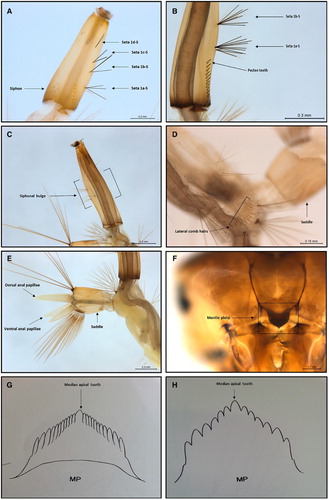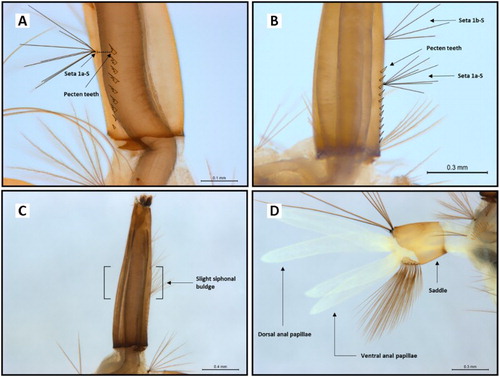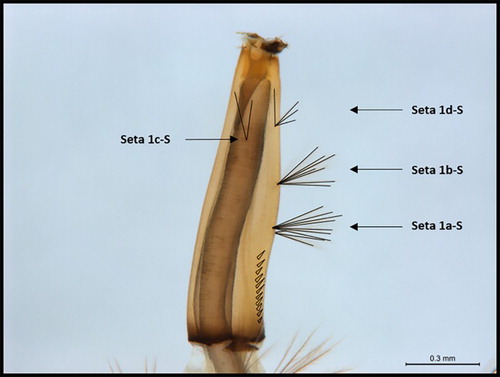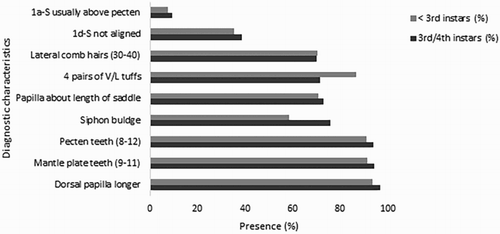Figures & data
Table 1. The nine diagnostic characters used to identify Culex quinquefasciatus larvae, based on Snell (Citation2005) and Belkin (Citation1962, Citation1968). In addition, a Culex pervigilans mantle plate character is also given for comparative purposes.
Figure 2. Standard morphological characters used to identify Culex quinquefasciatus larvae. A, Four pairs of ventro-lateral hair tufts, and seta 1d-S not aligned (this image is of a < 3rd instar larvae); B, the pecten teeth, and seta 1a-S positioned above the pecten teeth; C, distinct siphon bulge; D, lateral comb hairs; E, anal papillae about length of the saddle. and dorsal anal papillae longer than ventral anal papillae; F, mantle plate; G, mantle plate drawing modified from Belkin (Citation1962); H, Culex pervigilans mantle plate drawing modified from Belkin (Citation1962).

Figure 3. Some morphological variations observed in Culex quinquefasciatus larvae. A, Seta 1a-S in line with pecten teeth rather than above; B, seta 1a-S positioned below the level of pecten teeth rather than above; C, slight bulge of siphon, rather than distinct bulge; and D, anal papillae longer than saddle rather than equal.

Figure 4. Culex quinquefasciatus larvae displaying seta 1c-S out of alignment, instead of seta 1d-S.

Figure 5. The nine diagnostic characters used for identification of Culex quinquefasciatus and their observed frequency (presence) in < 3rd instar (n = 149) and 3rd/4th instar larvae (n = 414) collected at the Auckland Zoo.


